Norman Poh
The Multiscenario Multienvironment BioSecure Multimodal Database (BMDB)
Nov 17, 2021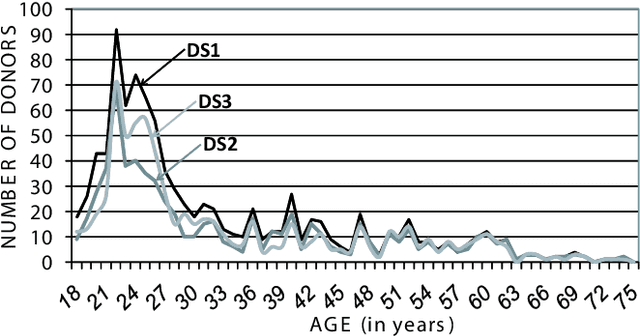


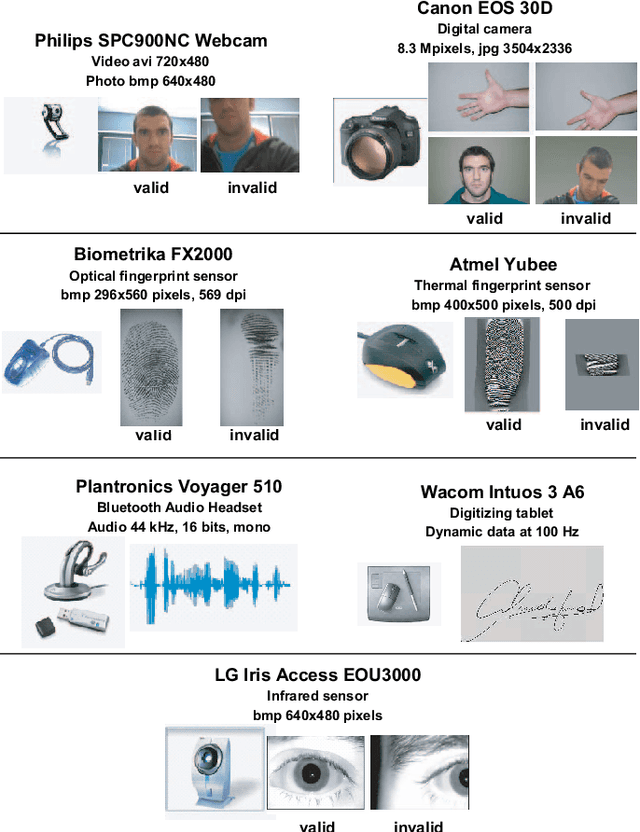
Abstract:A new multimodal biometric database designed and acquired within the framework of the European BioSecure Network of Excellence is presented. It is comprised of more than 600 individuals acquired simultaneously in three scenarios: 1) over the Internet, 2) in an office environment with desktop PC, and 3) in indoor/outdoor environments with mobile portable hardware. The three scenarios include a common part of audio/video data. Also, signature and fingerprint data have been acquired both with desktop PC and mobile portable hardware. Additionally, hand and iris data were acquired in the second scenario using desktop PC. Acquisition has been conducted by 11 European institutions. Additional features of the BioSecure Multimodal Database (BMDB) are: two acquisition sessions, several sensors in certain modalities, balanced gender and age distributions, multimodal realistic scenarios with simple and quick tasks per modality, cross-European diversity, availability of demographic data, and compatibility with other multimodal databases. The novel acquisition conditions of the BMDB allow us to perform new challenging research and evaluation of either monomodal or multimodal biometric systems, as in the recent BioSecure Multimodal Evaluation campaign. A description of this campaign including baseline results of individual modalities from the new database is also given. The database is expected to be available for research purposes through the BioSecure Association during 2008
Benchmarking Quality-Dependent and Cost-Sensitive Score-Level Multimodal Biometric Fusion Algorithms
Nov 17, 2021



Abstract:Automatically verifying the identity of a person by means of biometrics is an important application in day-to-day activities such as accessing banking services and security control in airports. To increase the system reliability, several biometric devices are often used. Such a combined system is known as a multimodal biometric system. This paper reports a benchmarking study carried out within the framework of the BioSecure DS2 (Access Control) evaluation campaign organized by the University of Surrey, involving face, fingerprint, and iris biometrics for person authentication, targeting the application of physical access control in a medium-size establishment with some 500 persons. While multimodal biometrics is a well-investigated subject, there exists no benchmark for a fusion algorithm comparison. Working towards this goal, we designed two sets of experiments: quality-dependent and cost-sensitive evaluation. The quality-dependent evaluation aims at assessing how well fusion algorithms can perform under changing quality of raw images principally due to change of devices. The cost-sensitive evaluation, on the other hand, investigates how well a fusion algorithm can perform given restricted computation and in the presence of software and hardware failures, resulting in errors such as failure-to-acquire and failure-to-match. Since multiple capturing devices are available, a fusion algorithm should be able to handle this nonideal but nevertheless realistic scenario. In both evaluations, each fusion algorithm is provided with scores from each biometric comparison subsystem as well as the quality measures of both template and query data. The response to the call of the campaign proved very encouraging, with the submission of 22 fusion systems. To the best of our knowledge, this is the first attempt to benchmark quality-based multimodal fusion algorithms.
Automatic Delineation of Kidney Region in DCE-MRI
May 26, 2019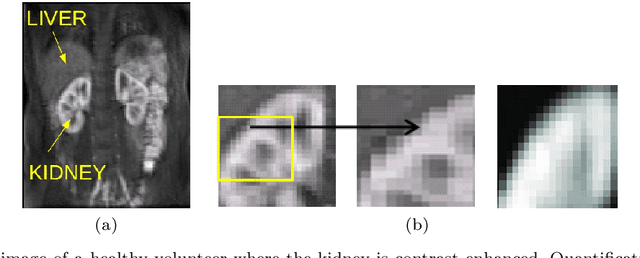
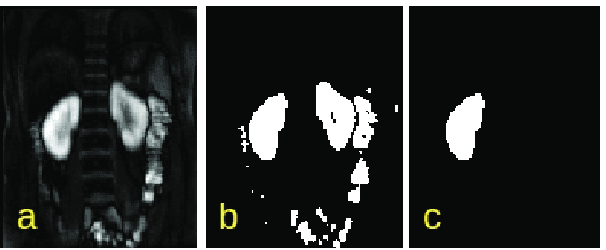

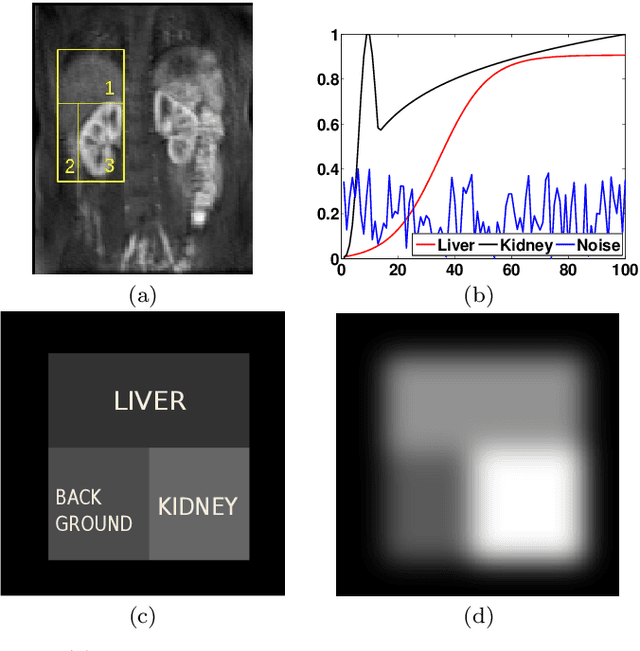
Abstract:Delineation of the kidney region in dynamic contrast-enhanced magnetic resonance Imaging (DCE-MRI) is required during post-acquisition analysis in order to quantify various aspects of renal function, such as filtration and perfusion or blood flow. However, this can be obfuscated by the Partial Volume Effect (PVE), caused due to the mixing of any single voxel with two or more signal intensities from adjacent regions such as liver region and other tissues. To avoid this problem, firstly, a kidney region of interest (ROI) needs to be defined for the analysis. A clinician may choose to select a region avoiding edges where PV mixing is likely to be significant. However, this approach is time-consuming and labour intensive. To address this issue, we present Dynamic Mode Decomposition (DMD) coupled with thresholding and blob analysis as a framework for automatic delineation of the kidney region. This method is first validated on synthetically generated data with ground-truth available and then applied to ten healthy volunteers' kidney DCE-MRI datasets. We found that the result obtained from our proposed framework is comparable to that of a human expert. For example, while our result gives an average Root Mean Square Error (RMSE) of 0.0097, the baseline achieves an average RMSE of 0.1196 across the 10 datasets. As a result, we conclude automatic modelling via DMD framework is a promising approach.
Functional Segmentation through Dynamic Mode Decomposition: Automatic Quantification of Kidney Function in DCE-MRI Images
May 24, 2019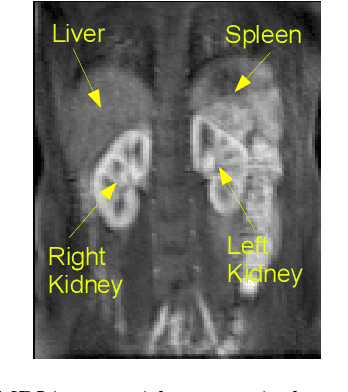
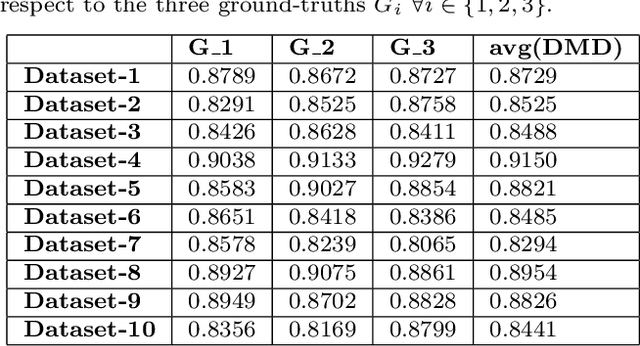
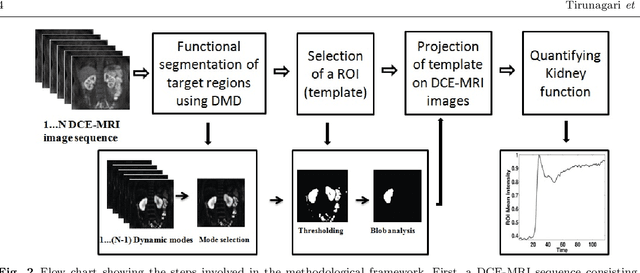
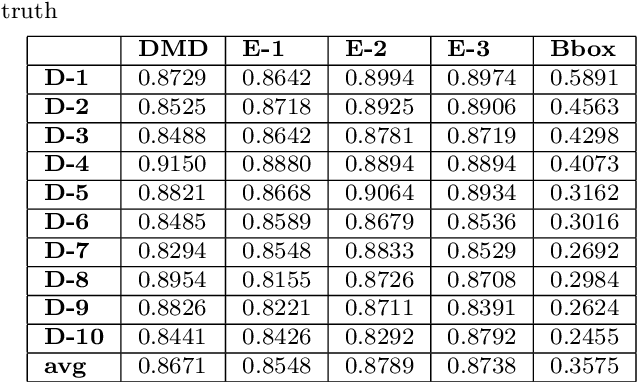
Abstract:Quantification of kidney function in Dynamic Contrast-Enhanced Magnetic Resonance Imaging (DCE-MRI) requires careful segmentation of the renal region of interest (ROI). Traditionally, human experts are required to manually delineate the kidney ROI across multiple images in the dynamic sequence. This approach is costly, time-consuming and labour intensive, and therefore acts to limit patient throughout and acts as one of the factors limiting the wider adoption of DCR-MRI in clinical practice. Therefore, to address this issue, we present the first use of Dynamic Mode Decomposition (DMD) as a basis for automatic segmentation of a dynamic sequence, in this case, kidney ROIs in DCE-MRI. Using DMD coupled combined with thresholding and connected component analysis is first validated on synthetically generated data with known ground-truth, and then applied to ten healthy volunteers' DCE-MRI datasets. We find that the segmentation result obtained from our proposed DMD framework is comparable to that of expert observers and very significantly better than that of an a-priori bounding box segmentation. Our result gives a mean Jaccard coefficient of 0.87, compared to mean scores of 0.85, 0.88 and 0.87 produced from three independent manual annotations. This represents the first use of DMD as a robust automatic data-driven segmentation approach without requiring any human intervention. This is a viable, efficient alternative approach to current manual methods of isolation of kidney function in DCE-MRI.
"Flow Size Difference" Can Make a Difference: Detecting Malicious TCP Network Flows Based on Benford's Law
Jan 20, 2017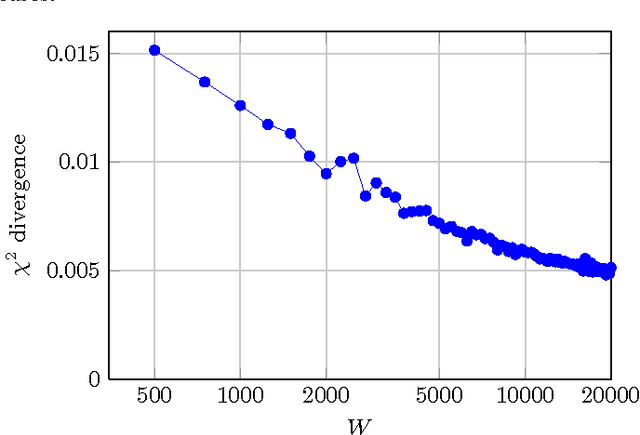

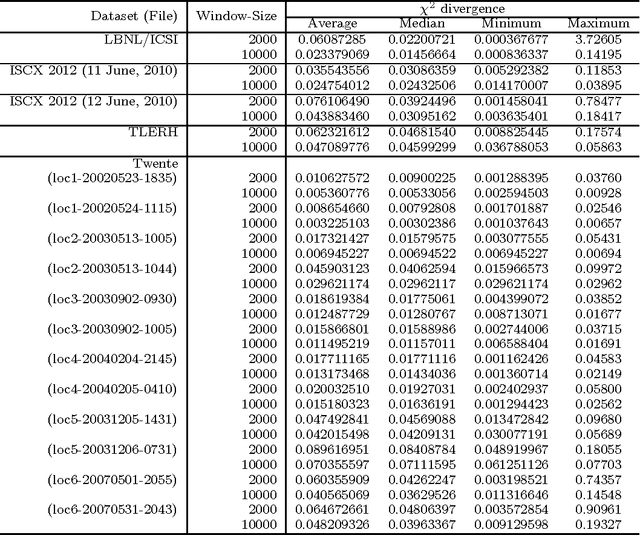
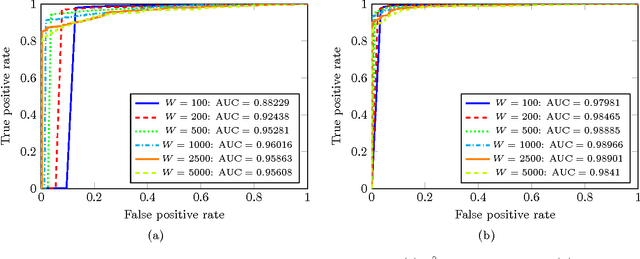
Abstract:Statistical characteristics of network traffic have attracted a significant amount of research for automated network intrusion detection, some of which looked at applications of natural statistical laws such as Zipf's law, Benford's law and the Pareto distribution. In this paper, we present the application of Benford's law to a new network flow metric "flow size difference", which have not been studied before by other researchers, to build an unsupervised flow-based intrusion detection system (IDS). The method was inspired by our observation on a large number of TCP flow datasets where normal flows tend to follow Benford's law closely but malicious flows tend to deviate significantly from it. The proposed IDS is unsupervised, so it can be easily deployed without any training. It has two simple operational parameters with a clear semantic meaning, allowing the IDS operator to set and adapt their values intuitively to adjust the overall performance of the IDS. We tested the proposed IDS on two (one closed and one public) datasets, and proved its efficiency in terms of AUC (area under the ROC curve). Our work showed the "flow size difference" has a great potential to improve the performance of any flow-based network IDSs.
Visualisation of Survey Responses using Self-Organising Maps: A Case Study on Diabetes Self-care Factors
Aug 30, 2016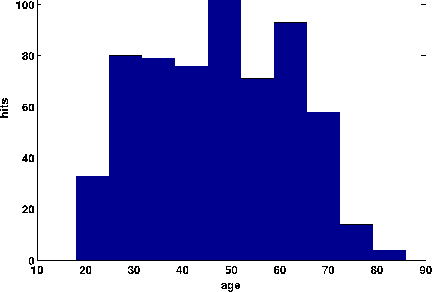
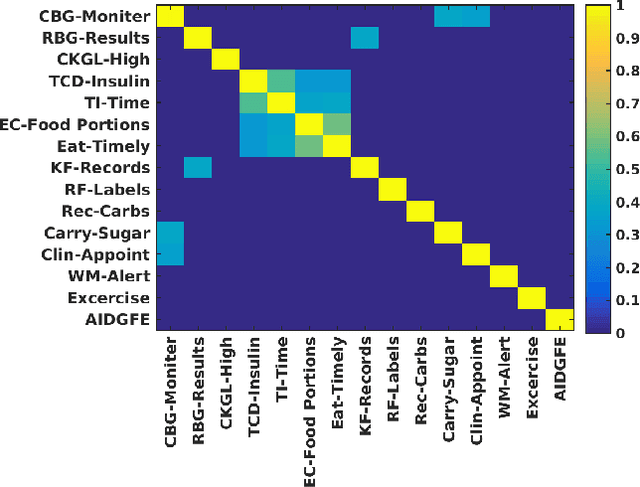
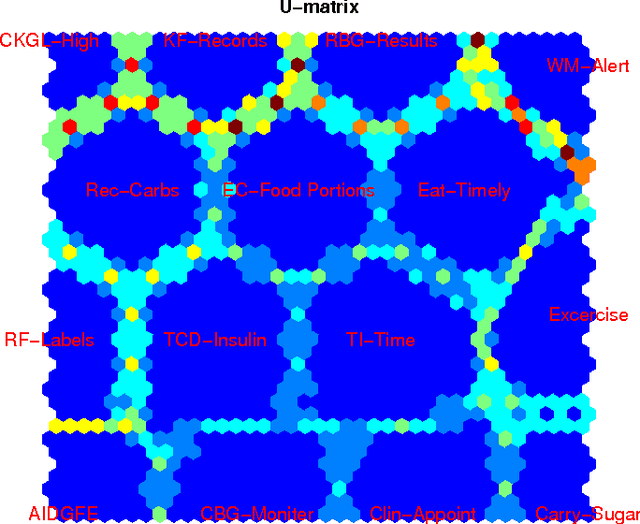
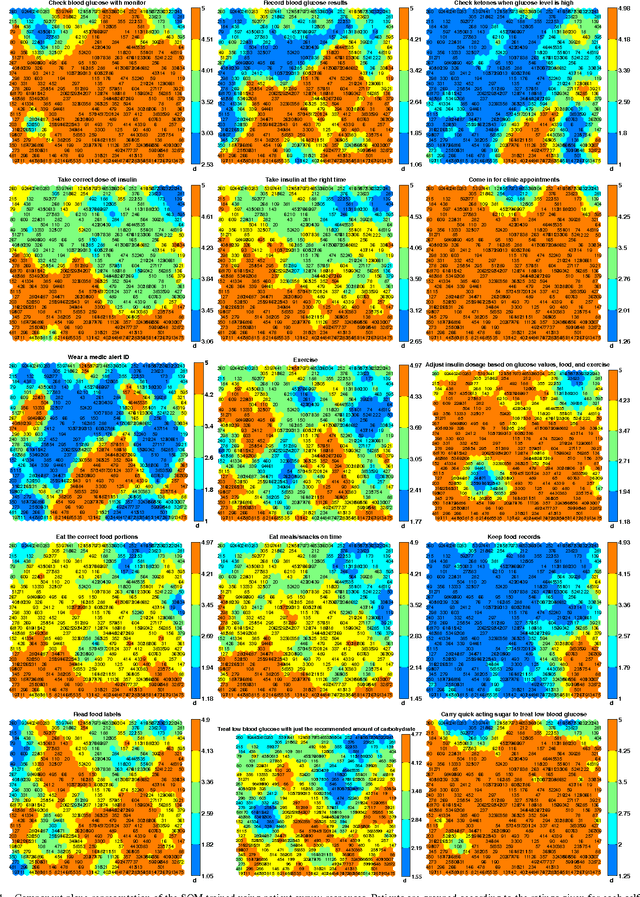
Abstract:Due to the chronic nature of diabetes, patient self-care factors play an important role in any treatment plan. In order to understand the behaviour of patients in response to medical advice on self-care, clinicians often conduct cross-sectional surveys. When analysing the survey data, statistical machine learning methods can potentially provide additional insight into the data either through deeper understanding of the patterns present or making information available to clinicians in an intuitive manner. In this study, we use self-organising maps (SOMs) to visualise the responses of patients who share similar responses to survey questions, with the goal of helping clinicians understand how patients are managing their treatment and where action should be taken. The principle behavioural patterns revealed through this are that: patients who take the correct dose of insulin also tend to take their injections at the correct time, patients who eat on time also tend to correctly manage their food portions and patients who check their blood glucose with a monitor also tend to adjust their insulin dosage and carry snacks to counter low blood glucose. The identification of these positive behavioural patterns can also help to inform treatment by exploiting their negative corollaries.
Can DMD obtain a Scene Background in Color?
Jul 22, 2016

Abstract:A background model describes a scene without any foreground objects and has a number of applications, ranging from video surveillance to computational photography. Recent studies have introduced the method of Dynamic Mode Decomposition (DMD) for robustly separating video frames into a background model and foreground components. While the method introduced operates by converting color images to grayscale, we in this study propose a technique to obtain the background model in the color domain. The effectiveness of our technique is demonstrated using a publicly available Scene Background Initialisation (SBI) dataset. Our results both qualitatively and quantitatively show that DMD can successfully obtain a colored background model.
Automatic Classification of Irregularly Sampled Time Series with Unequal Lengths: A Case Study on Estimated Glomerular Filtration Rate
May 17, 2016

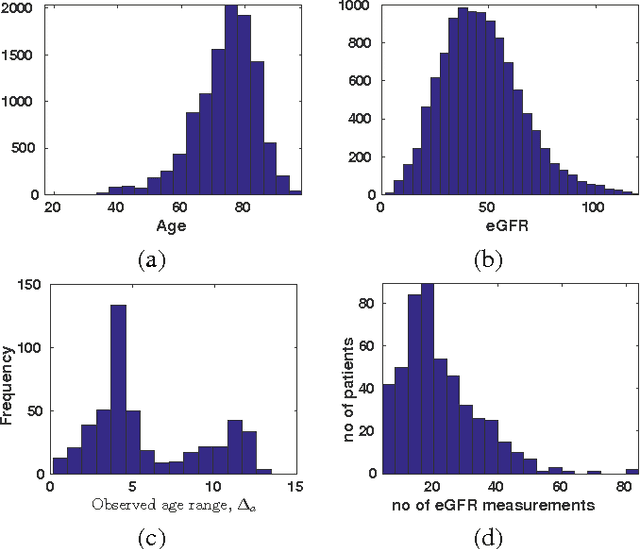

Abstract:A patient's estimated glomerular filtration rate (eGFR) can provide important information about disease progression and kidney function. Traditionally, an eGFR time series is interpreted by a human expert labelling it as stable or unstable. While this approach works for individual patients, the time consuming nature of it precludes the quick evaluation of risk in large numbers of patients. However, automating this process poses significant challenges as eGFR measurements are usually recorded at irregular intervals and the series of measurements differs in length between patients. Here we present a two-tier system to automatically classify an eGFR trend. First, we model the time series using Gaussian process regression (GPR) to fill in `gaps' by resampling a fixed size vector of fifty time-dependent observations. Second, we classify the resampled eGFR time series using a K-NN/SVM classifier, and evaluate its performance via 5-fold cross validation. Using this approach we achieved an F-score of 0.90, compared to 0.96 for 5 human experts when scored amongst themselves.
Identifying Similar Patients Using Self-Organising Maps: A Case Study on Type-1 Diabetes Self-care Survey Responses
Mar 21, 2015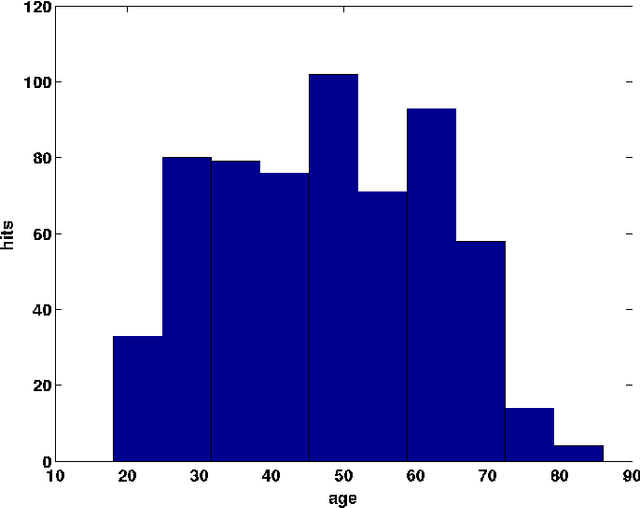
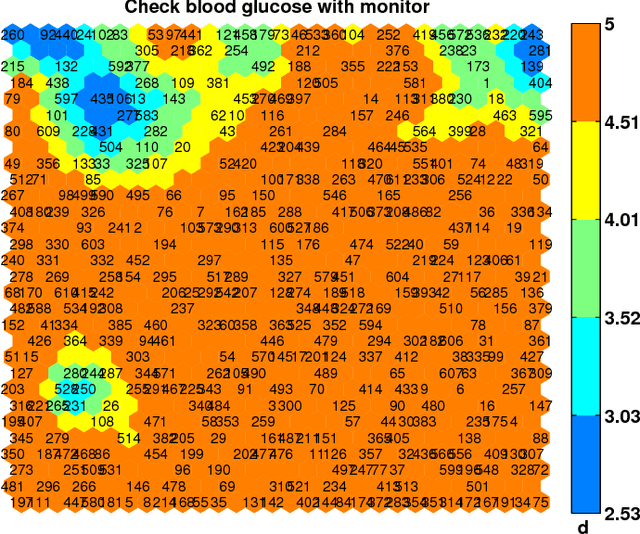
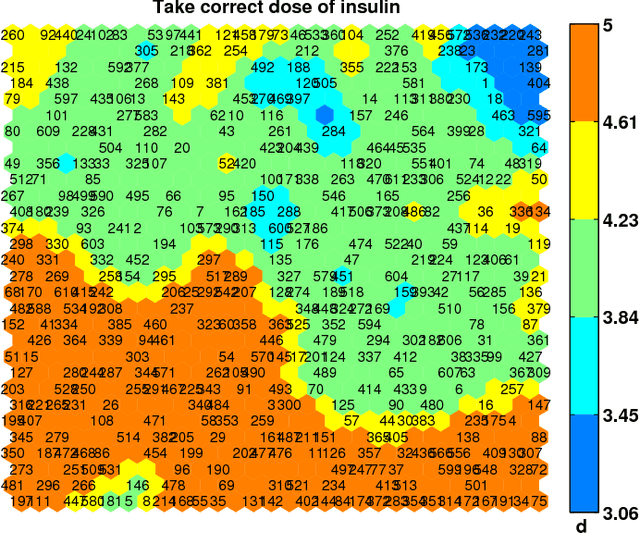
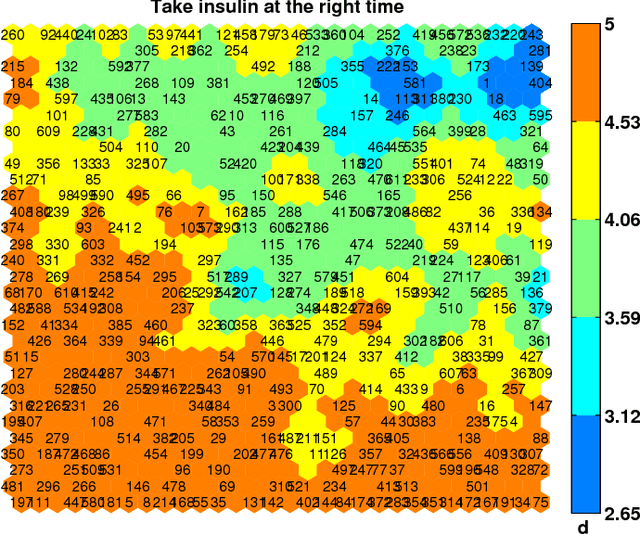
Abstract:Diabetes is considered a lifestyle disease and a well managed self-care plays an important role in the treatment. Clinicians often conduct surveys to understand the self-care behaviors in their patients. In this context, we propose to use Self-Organising Maps (SOM) to explore the survey data for assessing the self-care behaviors in Type-1 diabetic patients. Specifically, SOM is used to visualize high dimensional similar patient profiles, which is rarely discussed. Experiments demonstrate that our findings through SOM analysis corresponds well to the expectations of the clinicians. In addition, our findings inspire the experts to improve their understanding of the self-care behaviors for their patients. The principle findings in our study show: 1) patients who take correct dose of insulin, inject insulin at the right time, 2) patients who take correct food portions undertake regular physical activity and 3) patients who eat on time take correct food portions.
 Add to Chrome
Add to Chrome Add to Firefox
Add to Firefox Add to Edge
Add to Edge